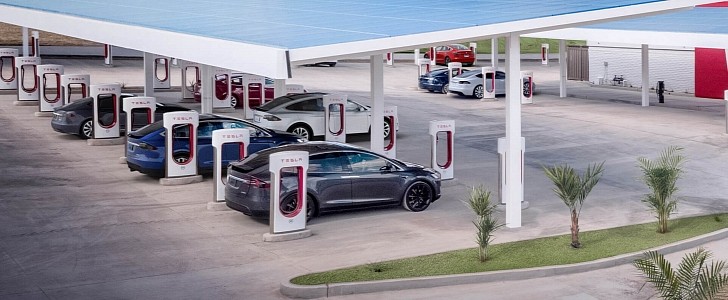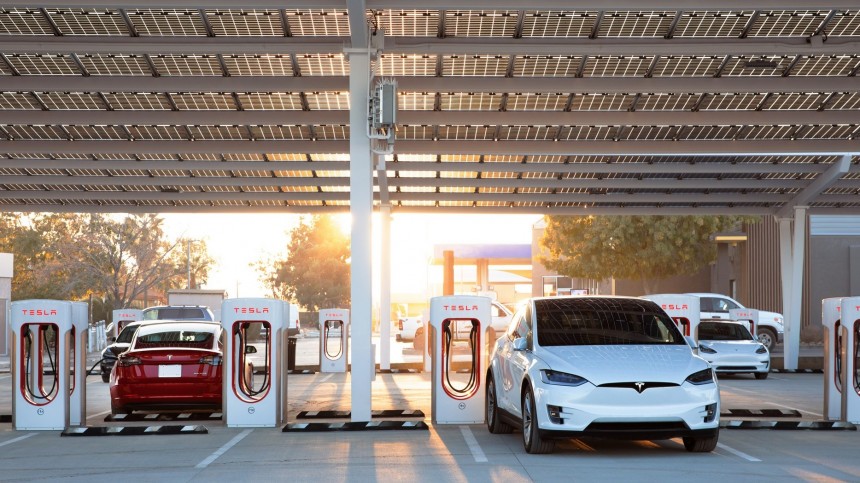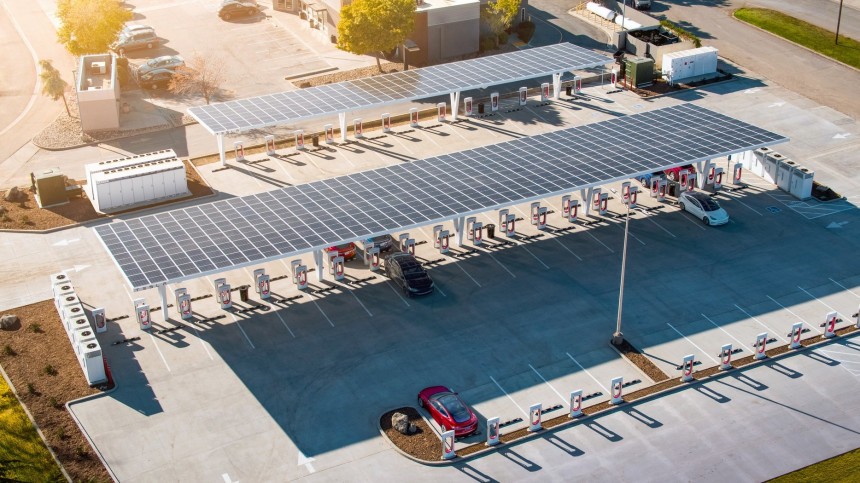Tesla made the headlines when Elon Musk announced that the company would open Superchargers to other brands. The problem is that it doesn’t make sense. With more affordable vehicles for sale, the Tesla Supercharging network is busier than ever. People that used to charge easily now have to wait to do so. Why add more users to these charging stations? It may have to do with incentives announced by Joe Biden on the American Jobs Plan.
In that document, the White House states that it plans to invest $15 billion “to build a national network of 500,000 charging stations.” All it takes is that these stations are publicly available: no government would give money to a charging network dedicated to a single company.
That strategy was welcome when Tesla was willing to present itself as a viable alternative to combustion-engined vehicles. In that sense, it did not want to wait for a charging infrastructure to be created, and it did one on its own. To make the idea even more attractive, it offered Supercharging for life to its first customers.
When Superchargers started to get crowded with the introduction of the Tesla Model 3, the company created fees and time limits so that everybody could charge their cars. Kevin Shenkman recently started a class-action to sue Tesla for these fees. He kindly sent us a copy of the complaint and allowed us to talk to his attorney, Seth Yohalem.
Unfortunately, they decided not to comment about it because it is an ongoing lawsuit. However, the complaint shows that the main argument is not against paying a fee: it is about broken promises. If Tesla said Supercharging would be free forever for these customers, that’s what they want.
The main point of the class action is that charging is not as easy as filling up a fuel tank. You have to plug in your car and wait, wait, and wait a bit more until it is done. Early adopters put their vehicles in Superchargers and went shopping, eating, or doing any other activity that would allow them to make waiting times more productive than playing video games, for example.
According to the lawsuit, it would be Tesla’s problem to ensure that Supercharging would still be free for those who got that promise. What it argues is that Tesla can’t change the game’s rules while the ball is still in motion because it is losing it.
The complaint even gave some suggestions of how Tesla could ensure that. It could make a few stalls exclusive to those early buyers with free Supercharging, put someone to move the cars when they were done charging, or expand the network to a point where everybody would still find a free stall without the present competition. That would involve investments, but the lawsuit states that “the world’s most valuable car company could easily have afforded any of these solutions.”
Elon Musk claimed in a recent tweet that Tesla created its own connector because “there was no standard back then.” He refers to 2012: that’s when Tesla deployed its first six Supercharging stations. The Nissan Leaf was presented in December 2010, and it already had CHAdeMO as a standard. CCS (Combined Charging System) was proposed in October 2011.
That seems to be an excuse for why Superchargers are not publicly available, but that does not match. People have developed adapters to use the Tesla standard in the US for a long time already. In Europe, Tesla vehicles use CCS Type 2 as their charging standard. In other words, the Supercharging network could be available to other EVs for a long time already. Why only now? The American Jobs Plan description on the White House page was published on May 18, 2021.
We’ll have to wait to see how Tesla plans to allow other EVs to use its Superchargers. European countries already offer incentives for public charging stations. Tesla may have an eye on them too to expand its network as much as possible. Although the Tesla community is now unhappy with the move, it may eventually see its benefits if the expansion happens thanks to taxpayers’ money.
That strategy was welcome when Tesla was willing to present itself as a viable alternative to combustion-engined vehicles. In that sense, it did not want to wait for a charging infrastructure to be created, and it did one on its own. To make the idea even more attractive, it offered Supercharging for life to its first customers.
When Superchargers started to get crowded with the introduction of the Tesla Model 3, the company created fees and time limits so that everybody could charge their cars. Kevin Shenkman recently started a class-action to sue Tesla for these fees. He kindly sent us a copy of the complaint and allowed us to talk to his attorney, Seth Yohalem.
The main point of the class action is that charging is not as easy as filling up a fuel tank. You have to plug in your car and wait, wait, and wait a bit more until it is done. Early adopters put their vehicles in Superchargers and went shopping, eating, or doing any other activity that would allow them to make waiting times more productive than playing video games, for example.
According to the lawsuit, it would be Tesla’s problem to ensure that Supercharging would still be free for those who got that promise. What it argues is that Tesla can’t change the game’s rules while the ball is still in motion because it is losing it.
Elon Musk claimed in a recent tweet that Tesla created its own connector because “there was no standard back then.” He refers to 2012: that’s when Tesla deployed its first six Supercharging stations. The Nissan Leaf was presented in December 2010, and it already had CHAdeMO as a standard. CCS (Combined Charging System) was proposed in October 2011.
We created our own connector, as there was no standard back then & Tesla was only maker of long range electric cars.
— Elon Musk (@elonmusk) July 20, 2021
It’s one fairly slim connector for both low & high power charging.
That said, we’re making our Supercharger network open to other EVs later this year.
That seems to be an excuse for why Superchargers are not publicly available, but that does not match. People have developed adapters to use the Tesla standard in the US for a long time already. In Europe, Tesla vehicles use CCS Type 2 as their charging standard. In other words, the Supercharging network could be available to other EVs for a long time already. Why only now? The American Jobs Plan description on the White House page was published on May 18, 2021.
We’ll have to wait to see how Tesla plans to allow other EVs to use its Superchargers. European countries already offer incentives for public charging stations. Tesla may have an eye on them too to expand its network as much as possible. Although the Tesla community is now unhappy with the move, it may eventually see its benefits if the expansion happens thanks to taxpayers’ money.
























